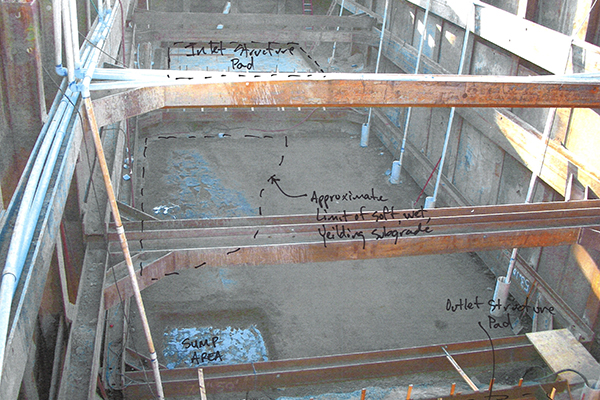At the April 2015 annual conference, Leighton was awarded CalGEO’s (California Geotechnical Engineering Association) Large Project of the Year for the Santa Ana Regional Interceptor Line, (SARI). Djan Chandra, Leighton’s Principal Engineer on the project, was on hand to accept the award.
Working for the lead civil engineering firm Leighton provided a Geotechnical Data Report (GDR), and a Geotechnical Interpretive Report (GIR) with design information for the pipeline, backfill, tunnel lining, shoring, dewatering, seismic design parameters, and settlement potential. Leighton also prepared a Geotechnical Baseline Report presenting the baseline conditions for bidding by the contractors and reference during construction. Leighton also provided a Phase I Environmental Assessment, and Aerial Deposited Lead survey in the Caltrans right-of-way.
The field investigation along the 4-mile segment included more than 75 borings and installation of groundwater monitoring wells to monitor seasonal fluctuations in groundwater levels (with wide variations due to releases from Prado Dam). Pump tests were performed to evaluate in-situ hydraulic conductivity and to develop parameters for trench and jacking pit dewatering design. Electrical Resistivity Imaging was used to evaluate the location of the Whittier-Elsinore Fault that was projected to cross the pipeline alignment. Fieldwork was closely coordinated with various agencies, including City of Yorba Linda, Orange County Flood Control District, Orange County Environmental Health Division, Caltrans, State Parks of California, Regional Water Quality Control Board, and U.S. Army Corps of Engineers.
The new pipeline is 54 inches in diameter and in places 80 feet deep, outside the limits of the 100-year flood plain. Most of the pipeline was installed using conventional cut-and-cover method. Micro tunneling technique was used at river crossings, freeway ramp crossings, and where the topography required deep excavations. Due to the narrow strip of right-of-way and topography of the site, the micro tunneling for installation of the pipeline set two North American records: the longest curve (2,187 feet) and longest compound (s-shaped) curve (1,567 feet). Geotechnical parameters were provided for the micro tunneling design based on the interpreted data from the borings and laboratory test results.




1